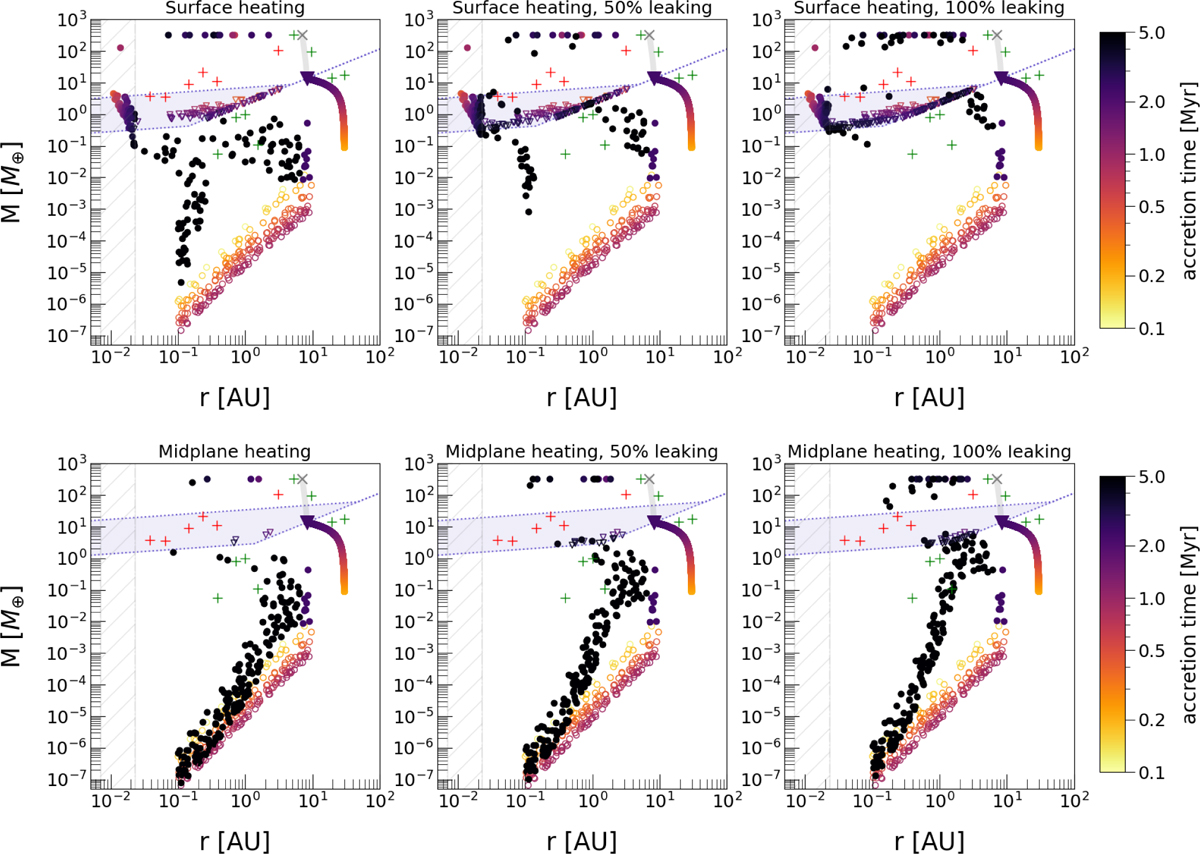Fig. 8

Download original image
Possible effect of leaking pebbles through the giant planet’s gap. Same set of simulations as in Fig. 6 for surface-heated (top row) and midplane-heated (bottom row) discs but with leaking efficiency through the giant planet’s gap after isolation mass. The first row shows surface-heated discs, respectively without, with 50% and with 100% of pebbles leaking through the gap carved by the Jupiter-like planet after reaching pebble isolation mass. The second row shows the same, but for a midplane-heated disc. A planetary gap that allows for half of the pebble flux to leak through promotes the growth of the outermost embryos in the population in both models. The difference lies in the fact that, in the weaker surface-heating case, nearly all the inner embryos grow into super-Earths, while in the midplane-heating case, the embryos grow bigger in mass but still remain firmly below isolation mass. A complete permeability of the gap leads to systems of only super-Earths and gas giants in surface-heated discs, while in the miplane-heating case, despite being promoted, the embryo growth is still suppressed inside 1 AU.
Current usage metrics show cumulative count of Article Views (full-text article views including HTML views, PDF and ePub downloads, according to the available data) and Abstracts Views on Vision4Press platform.
Data correspond to usage on the plateform after 2015. The current usage metrics is available 48-96 hours after online publication and is updated daily on week days.
Initial download of the metrics may take a while.


